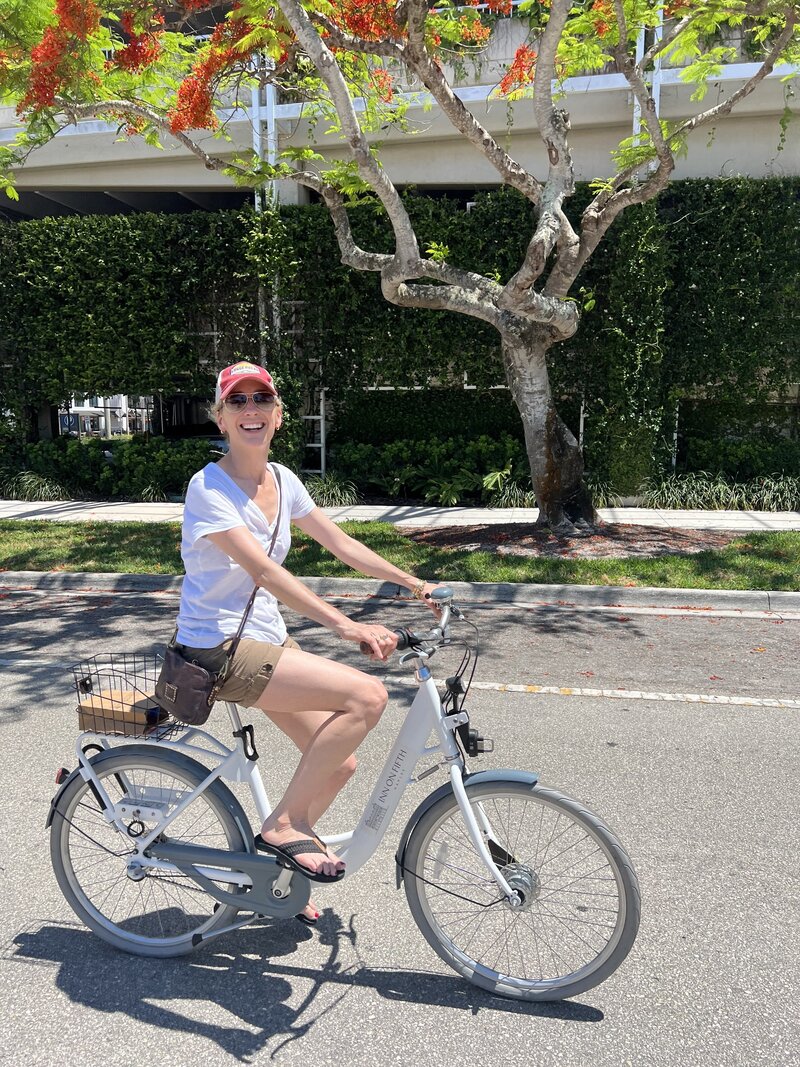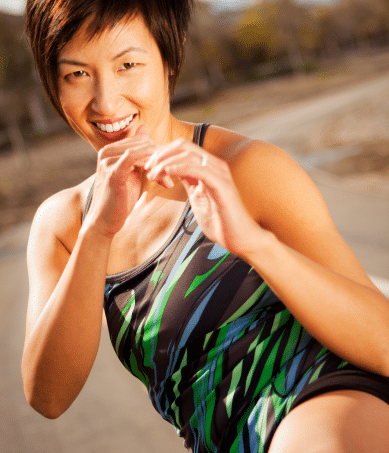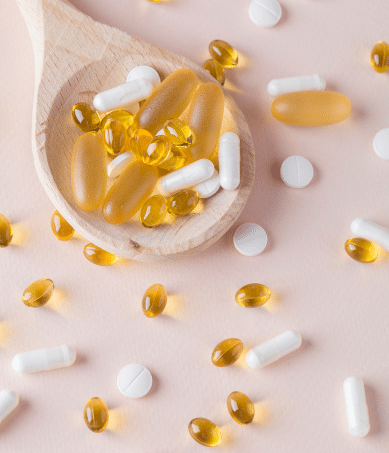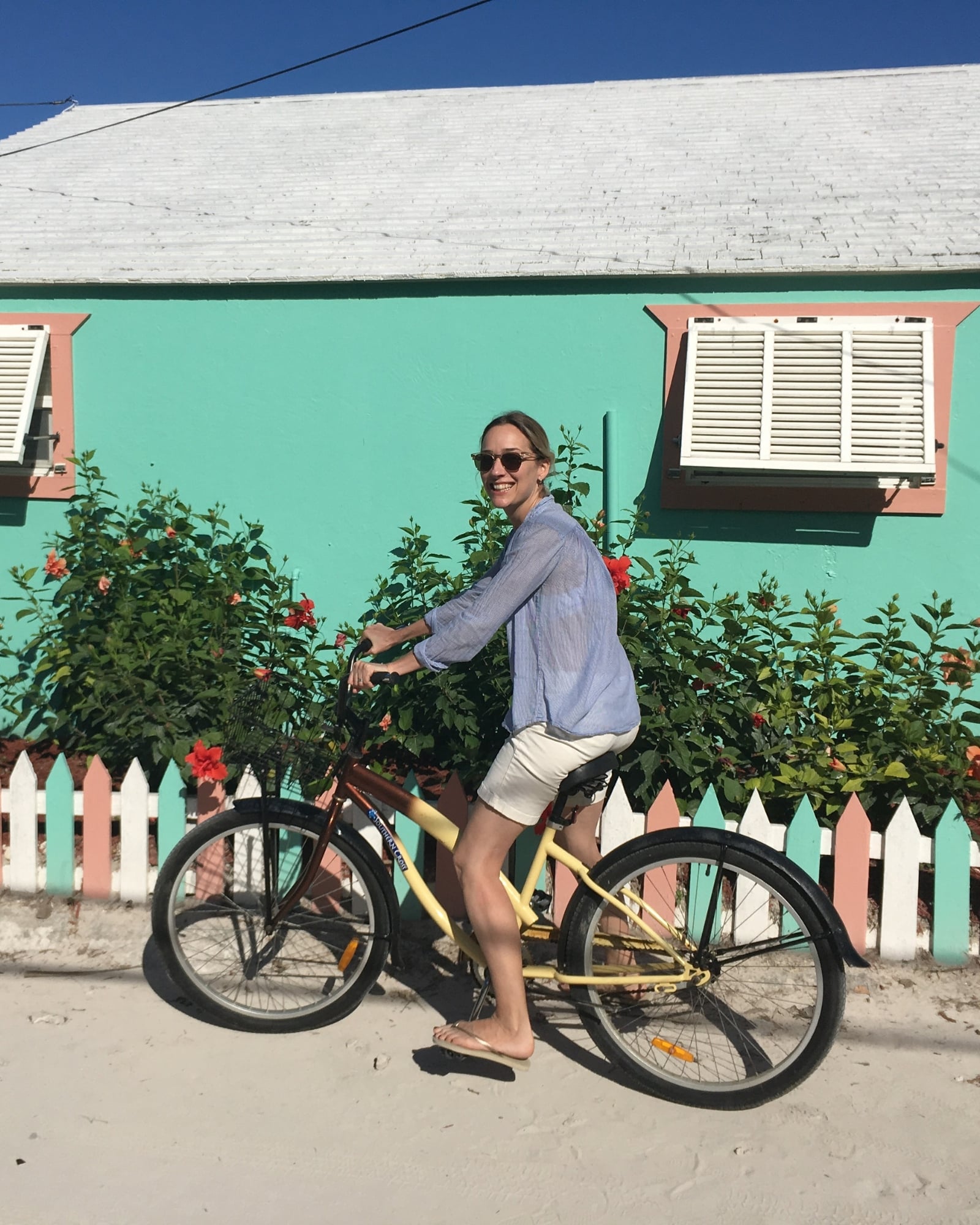In This Article:
What is Natural Sunscreen | Choosing the Best Natural Sunscreen
| My #1 Natural Sunscreen Recommendation
Hiya Gorgeous,
I love summer. Bare feet. Swimming holes. Veggie gardening. And the soul-warming sun.
In my earlier days, I had a dangerous love affair with those radiant rays. Sunscreen? Yeah, right. Nothing was going to stand between me, my baby oil, a Body Glove surfer bikini and a golden tan (or rather, a lobster-red sunburn!).
Today, I’m much wiser, but not just about the importance of wearing sunscreen. I’m also aware that we all need to be savvy consumers when choosing a safe, natural sunscreen.
When it comes to sun exposure and protection, there are a lot of questions to answer. How much basking in the sun is too much? Are there benefits to not wearing sunscreen sometimes? What kind of protection does sunscreen provide? Which ingredients should I avoid?
It can be downright mind-boggling to choose a safe, natural Sunscreen that feels good AND gets the job done.
That’s why I rely on the Environmental Working Group (EWG). Every year they do the hard work of analyzing hundreds of sunscreens to uncover health and environmental concerns—and help you choose the best sunscreen for you.
Today, I’m digging into EWG’s recommendations and giving you my five essential tips for having a safe relationship with the sun. Hold onto your sun hats, folks, let’s dive in!
What is Natural Sunscreen?
Ever wondered what makes natural sunscreen, well, natural? These products, often called mineral sunscreens, pack a punch with zinc oxide and titanium dioxide—minerals straight from the earth that act as tiny warriors, bouncing the sun’s harmful rays right off your skin.
Unlike chemical sunscreens, which absorb UV rays to shield your skin, natural sunscreens are like a protective layer sitting on top of your skin. They reflect the sun’s rays away, ensuring they don’t penetrate your skin at all. It’s like having a little mirror on your skin.
For those of us with sensitive skin, natural sunscreens can be a game changer. They’re gentle and sit on the surface, which means they’re less likely to cause irritation.
Best of all, you don’t have to sacrifice quality by going the natural route. The FDA has confirmed that zinc oxide and titanium dioxide are generally recognized as safe and effective (GRASE) for use in sunscreens.
Benefits of the sun
Vitamin D is an essential hormone for healthy bones, immune function and blood cell formation. Luckily, your body produces vitamin D every time you step into the sunlight. Easy, right?
Just keep in mind that you don’t need much unprotected sun exposure to meet your needs.
According to the World Health Organization (WHO), 5–15 minutes a few times a week is sufficient to maintain healthy vitamin D levels.
Getting some sunshine and fresh air is also great for your mood. There’s nothing quite like soaking up some good old-fashioned rays to turn that frown upside down. But that doesn’t mean it’s safe to sit out and bake sans sunscreen for hours on end. That’s where a great natural sunscreen comes in (I share my recommendation below).
Damaging effects of the sun
The sun can have some serious damaging effects (no matter how beautiful it is!). Ultraviolet A (UVA) and Ultraviolet B (UVB) are the two types of sun rays that travel through the earth’s atmosphere and shine down on your glorious skin. They’re responsible for the golden tan so many of us try to attain each year. But if you think that this sun-kissed tone is healthy, think again. When your skin darkens, it’s actually a warning sign that your body is trying to prevent further DNA damage. (Psst… Don’t worry if you can’t bear to ditch that glow—check out my guide to safe self-tanner here.)
This is just one example of the ways UVA and UVB impact your health. Now let’s explore the difference between the two so that we know why it’s important to protect our skin from both.
UVA rays penetrate the top layer of your skin. They’re often to blame for wrinkles, leathery skin, sagging and sun spots. They can bust through clouds on a gloomy day, seep through your car windows and even sneak through some clothing. Although UVA rays are less likely to give you a sunburn, they’re still linked to increasing your risk of skin cancer because they can damage your basal and squamous skin cells.
UVB rays impact the top layer of your skin. They’re one of the major causes of skin cancer and your worst enemy when it comes to sunburns. UVB rays are strongest between 10 a.m. and 4 p.m., especially during the summer months.
Now that we’ve learned about UVA and UVB rays, let’s chat about how to find the perfect natural sunscreen for you!
How to Choose the Best Natural Sunscreen
Understanding sunscreen labels
What do all of those letters and numbers mean, anyway? First things first: Let’s get to the bottom of those often confusing sunscreen labels.
Sun Protection Factor (SPF)
SPF (short for “sun protection factor”) measures how long the sunscreen protects your skin from sunburn caused by UVB rays. So, for example, if your skin would typically burn after 10 minutes in the sun, a sunscreen with SPF 15 should allow you to stay in the sun 15 times longer (150 minutes) before your skin would start to burn.
Keep in mind that SPF doesn’t tell the whole story when it comes to the effectiveness of your sunscreen. Higher SPF is not always better—in fact, it can be misleading (source). Also, sweating, swimming and other physical activities can reduce the potency of the SPF, which means you may need to apply it more often. This resource from the Cleveland Clinic has some great application tips to help you get maximum protection!
UVA and UVB Protection
Your sunscreen may be protecting you from sunburn by blocking UVB rays (if you’re re-applying it often enough and using a sufficient amount), but you’re still vulnerable to skin damage if you’re not protected from UVA rays as well. I suggest looking for a sunscreen that has protection from both so you’re totally covered!
Mineral vs. Synthetic
EWG also notes the rise of mineral-only sunscreens in this year’s Sunscreen Guide. They rate these products more favorably than their non-mineral alternatives because they’re less likely to contain oxybenzone (a harmful chemical we’ll chat more about later). They’re also stable in sunlight and have a good balance of UVA and UVB protection.
Mineral sunscreens aren’t always free and clear, though—we still have to be aware of the potential challenges they present. So, let’s chat about how to choose a natural sunscreen that feels great and keeps your incredible epidermis out of harm’s way!
Red flags to avoid so you can pick the best sunscreen
When it comes to choosing any personal care product, it’s important to be your own health advocate. Knowledge is power, so you’ve taken a great first step just by reading this post (don’t forget to bookmark it so you can refer back later!).
Here’s what you’ve gotta keep in mind: There are chemicals in many personal care products, sunscreen included, that have been linked with cancer, birth defects and a variety of other health issues. And it doesn’t stop there—some of the ingredients are harmful not only to us, but to the environment, too.
I know you want to protect yourself, your family and the environment. So, here are a few red flags to look out for:
Vitamin A (retinyl palmitate or “retinol”)
This ingredient has been linked to the faster growth of skin tumors when applied and exposed to sunlight. And guess where it’s found? That’s right, in sunscreen! It may also lead to vitamin A toxicity. Yes, even though it’s good for you, there’s still such a thing as too much. Luckily, EWG does report that the number of sunscreens containing this problematic ingredient has dropped by more than half since 2010. That said, I still suggest keeping an eye out for it until companies stop using it or can prove it’s safe. You can read more about Vitamin A in sunscreen here.
Oxybenzone
This toxic chemical, which EWG found in almost 65 percent of non-mineral products it evaluated this year, is perhaps the most troubling sunscreen ingredient. It comes with a whole host of environmental and health concerns, including hormone disruption (source) and coral reef damage. The good news is, there are plenty of companies that don’t use oxybenzone!
Powder or Spray Sunscreens
As convenient as these products are, they pose a couple of challenges. First, the coverage you get is not always as consistent—it’s much easier to miss a spot. Second, you’re more likely to inhale them than you are a lotion. Needless to say, the chemicals we’ve been chatting about are not edible. Until companies can do more to assure us that sprays and powders are safe, keep this information in mind when you’re buying and applying.
Nanoparticles
Remember what I said before about mineral sunscreens? They’re a great choice, but they’re not perfect. Here’s the deal: Old-school mineral sunscreens were often known for their white, chalky look (SO not cute!). To remedy this, many brands have started using nanoparticles. The problem is, these babies are not well-regulated and vary greatly in their size, shape and so on—all factors that may impact the protection power of the sunscreen. Their effect on the environment is also not well understood. EWG goes into more detail about nanoparticles here, but the short story is that more research needs to be done to make sure they’re totally safe.
My #1 Natural Sunscreen Recommendation
Want my pick for the best natural sunscreen? My favorite skincare company, Annmarie Skin Care, has a reef-friendly everyday sunscreen that I’ve been using for a few years now (and it’s amazing!). Their Sun Love Everyday Sunscreen protects you daily with broad spectrum SPF 20. A few reasons why it’s my favorite:
- It uses non-nano zinc oxide for superior broad spectrum protection
- It protects the skin from harmful UVA and UVB rays
- It’s gentle on sensitive skin
- It deeply moisturizes and nourishes the skin with Pumpkin Seed Oil and Buriti Fruit Oil (ooh la la!)
- It offers a truly sheer application (which can be hard to find with zinc oxide sunscreen)
- Plus it’s reef friendly, antioxidant-rich, and paraben-free!
All Annmarie Skin Care products come with The MADE SAFE® seal, which means their products are only made with safe ingredients—and without toxic chemicals known to harm our health or our planet. Heck, even their packaging is eco-friendly… all created at wind-powered facilities!
Right now they’re offering 25% off the full size Sun Love Everyday Sunscreen. Grab a bottle today before this special discount ends!
How to Have a Healthy Relationship With the Sun
Applying natural sunscreen regularly when you’re out in the sun is important, but it’s not the answer to complete sun protection. You also need healthy sun habits!
Here are five ways to stay safe while you’re enjoying those radiant rays.
- Get your vitamin D. Spend 5–15 minutes in the sun (sans sunscreen) a few times per week to meet your vitamin D needs.
- Buy safer sunscreen. Check labels for toxic chemicals and use EWG’s guide to choose the best natural sunscreen for you. Look for broad spectrum (UVA/UVB) coverage and an SPF of 15–50.
- Use sunscreen responsibly. Apply the recommended amount (usually 1.5 oz) 30 minutes before sun exposure. Re-apply according to the SPF or more often if you’re sweating or swimming.
- Cover up! The best protection from the sun is complete protection. Cover up with a hat, long sleeves, a shady tree or an umbrella to give yourself a break from those rays. And don’t forget sunglasses—your eyes need protection, too!
- Always be prepared. Carry sun protection and sunscreen with you at all times. You never know when you or someone you’re with will need it.
Here’s the bottom line: Sunscreen and sun protection are still imperfect sciences. Some companies are making progress, and some have work to do. And when it comes to choosing the best possible protection for you, your family and the environment—a little awareness (check—you got that from this article!) and common sense go a long way.
Now, go have a blast this summer, sweetheart—you deserve it!
Your turn: What are your must-have items for a day in the sun? Do you have a favorite natural sunscreen? Let me know in the comments below!
Peace & fun in the sun,
P.S. 25% off my favorite sunscreen!
My favorite skin care line, Annmarie, is offering you a special deal: 25% off on their Sun Love Everyday Sunscreen. It’s all-natural, sustainably packaged and reef friendly. Even the shipping is included for the U.S. and Canada. Get yours before this sale ends!






hi Kris
I love reading your posts and learning so many new and important things from you. I can’t thank you enough for everything you do.
I can’t handle much sun, so most times I would just get my 15 to 20 minutes and then sit in the shade or cover up.I use very little stuff on my body.
Aww thank you for sharing Susan! It’s important to prioritize your health and well-being, especially in the sun. Taking those precautions and finding shade when needed is a wise choice. Keep taking care of yourself and keep listening to your body’s needs. xo
I use Young Livings Mineral Sunscreen SPF 50
There is definitely a need for education and the pursuit of a “healthy” sunscreen. After being diagnosed with melanoma, I have found this quest can be daunting. Everything you do affects you inside and out. It affects the world around you. So it’s important to be aware. And know this, it’s not “just” skin cancer.